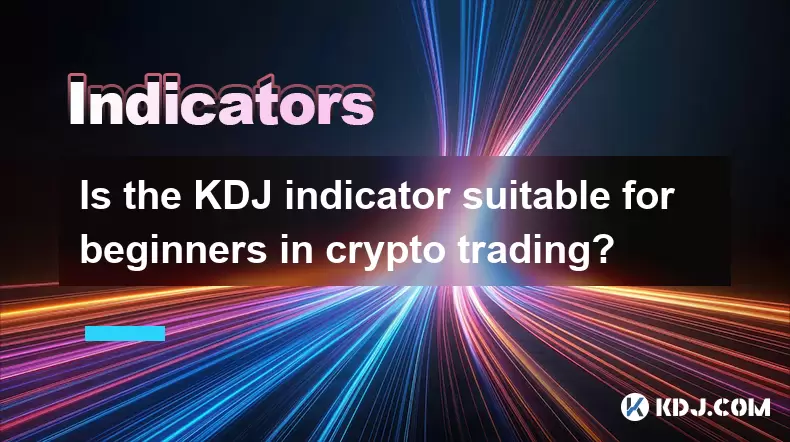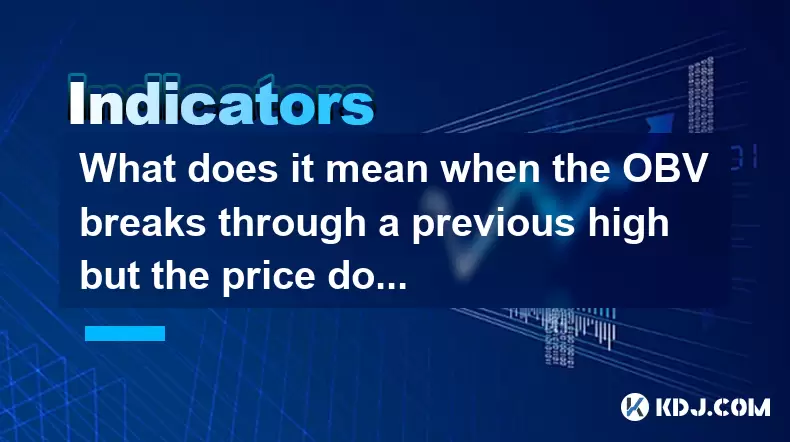-
 Bitcoin
Bitcoin $116700
0.24% -
 Ethereum
Ethereum $3973
4.34% -
 XRP
XRP $3.283
7.68% -
 Tether USDt
Tether USDt $1.000
0.01% -
 BNB
BNB $789.8
2.27% -
 Solana
Solana $176.2
3.31% -
 USDC
USDC $0.9999
0.00% -
 Dogecoin
Dogecoin $0.2238
5.14% -
 TRON
TRON $0.3389
-0.51% -
 Cardano
Cardano $0.7907
4.03% -
 Stellar
Stellar $0.4527
10.02% -
 Hyperliquid
Hyperliquid $41.07
4.27% -
 Sui
Sui $3.794
1.77% -
 Chainlink
Chainlink $19.49
10.40% -
 Bitcoin Cash
Bitcoin Cash $580.9
0.74% -
 Hedera
Hedera $0.2617
4.32% -
 Avalanche
Avalanche $23.41
3.67% -
 Ethena USDe
Ethena USDe $1.001
-0.03% -
 Litecoin
Litecoin $122.4
1.38% -
 Toncoin
Toncoin $3.364
1.49% -
 UNUS SED LEO
UNUS SED LEO $8.988
0.37% -
 Shiba Inu
Shiba Inu $0.00001295
2.82% -
 Uniswap
Uniswap $10.62
5.75% -
 Polkadot
Polkadot $3.922
4.46% -
 Dai
Dai $1.000
0.01% -
 Bitget Token
Bitget Token $4.494
2.15% -
 Monero
Monero $268.0
-1.30% -
 Cronos
Cronos $0.1523
3.68% -
 Pepe
Pepe $0.00001127
4.43% -
 Aave
Aave $285.4
4.85%
Is the KDJ indicator suitable for beginners in crypto trading?
The KDJ indicator helps crypto traders spot overbought/oversold levels using %K, %D, and %J lines, with signals like crossovers below 20 or above 80 for potential reversals.
Aug 08, 2025 at 08:29 pm

Understanding the KDJ Indicator in Crypto Trading
The KDJ indicator is a momentum oscillator derived from the Stochastic Oscillator, widely used in technical analysis to identify overbought and oversold conditions in financial markets. In the context of cryptocurrency trading, it evaluates the relationship between an asset’s closing price and its price range over a specific period. The KDJ consists of three lines: %K (the fast line), %D (the slow line, which is a moving average of %K), and %J (a divergence line that reflects the distance between %K and %D). These values help traders anticipate potential price reversals. For beginners, the visual clarity of the KDJ’s signal lines can make it easier to interpret short-term price movements compared to more complex indicators.
Components of the KDJ Indicator
To fully grasp how the KDJ works, new traders should understand its three core components:
- %K Line: This line represents the current momentum and is calculated based on the formula:
%K = [(Current Close - Lowest Low) / (Highest High - Lowest Low)] * 100
The default period is typically 9 candles, meaning it evaluates the last 9 price bars. - %D Line: A 3-period moving average of %K, smoothing out fluctuations and providing clearer trading signals.
- %J Line: Calculated as
3 × %K – 2 × %D, this line amplifies movements and can signal early trend changes.
These components are displayed on a scale from 0 to 100. When %K and %D fall below 20, the market is considered oversold, suggesting a potential upward reversal. Conversely, when they rise above 80, the asset may be overbought, indicating a possible pullback. The %J line crossing above 100 or dropping below 0 can signal extreme momentum, useful for spotting breakout opportunities.
Advantages of KDJ for Beginner Traders
One of the primary reasons the KDJ indicator is suitable for beginners is its visual simplicity and intuitive signals. Unlike advanced tools requiring deep statistical knowledge, the KDJ provides clear crossover and divergence patterns. For example:
- A bullish signal occurs when the %K line crosses above the %D line in the oversold zone (below 20).
- A bearish signal appears when %K crosses below %D in the overbought zone (above 80).
These signals are easy to spot on most trading platforms such as Binance, TradingView, or MetaTrader. Additionally, the KDJ adapts well to the high volatility of cryptocurrencies, making it useful in fast-moving markets like Bitcoin or Ethereum. Beginners can apply it across various timeframes—15-minute, 1-hour, or daily charts—without needing advanced calibration.
Step-by-Step Guide to Applying KDJ on a Trading Platform
Setting up the KDJ indicator for crypto trading involves a straightforward process. Here’s how to do it on TradingView, one of the most popular platforms:
- Open the TradingView website and log in or create a free account.
- Search for a cryptocurrency pair, such as BTC/USDT, in the symbol search bar.
- Click on the "Indicators" button located at the top of the chart.
- Type "KDJ" in the search field within the Indicators window.
- Select the KDJ (Stochastic RSI) or KDJ (Stochastic) option, depending on availability.
- Adjust the settings: set N=9 (period for high/low), M1=3 (%K smoothing), and M2=3 (%D calculation).
- Click "Add to Chart" to display the KDJ panel below the price chart.
Once applied, monitor the three lines in the oscillator window. Customize colors for clarity—green for %K, blue for %D, and red for %J—to improve readability. Use the zoom function to focus on recent crossovers and confirm signals with volume or candlestick patterns.
Common Pitfalls and How to Avoid Them
While the KDJ is beginner-friendly, it is not without risks. One major issue is false signals during strong trends. In a prolonged bullish crypto market, the indicator may remain overbought for extended periods, leading to premature sell decisions. To mitigate this:
- Combine KDJ with trend-following tools like moving averages (e.g., 50-day or 200-day EMA).
- Only act on KDJ signals that align with the overall market direction.
- Use higher timeframes (e.g., 4-hour or daily) to filter out noise from lower timeframes.
Another common mistake is ignoring divergence. For instance, if the price makes a higher high but the KDJ makes a lower high, it indicates weakening momentum. Recognizing such bearish divergence can prevent entering long positions too late. Similarly, bullish divergence (price lower low, KDJ higher low) may signal an upcoming reversal.
Practical Example: Using KDJ in a Real Trade
Imagine monitoring ETH/USDT on a 1-hour chart. Over the past 9 hours, Ethereum has dropped sharply, and the KDJ lines are near 15, with %K crossing above %D. This suggests an oversold condition and potential bounce. Before placing a trade:
- Confirm volume is increasing, indicating renewed buying interest.
- Check that the 50-period EMA is acting as support.
- Set a stop-loss below the recent low and a take-profit near the nearest resistance.
If the %J line rapidly climbs from below 0 to above 30, it reinforces the bullish signal. After entry, monitor whether %K remains above %D. If it crosses back down, consider exiting or tightening the stop-loss.
Frequently Asked Questions
Q: Can the KDJ indicator be used on all cryptocurrencies?
Yes, the KDJ indicator works on any crypto asset with sufficient price data, including Bitcoin, Solana, and meme coins like Dogecoin. However, assets with low liquidity or erratic volume may generate unreliable signals due to price manipulation or thin order books.
Q: What are the default KDJ settings for crypto trading?
The standard settings are N=9, M1=3, M2=3. These reflect a 9-period high-low range, a 3-period smoothing for %K, and a 3-period average for %D. Beginners should start with these before experimenting with adjustments.
Q: How does KDJ differ from the regular Stochastic Oscillator?
The KDJ adds the %J line, which amplifies momentum by calculating 3 × %K – 2 × %D. This makes it more sensitive to sudden price changes, offering earlier signals than the traditional Stochastic, which only uses %K and %D.
Q: Should beginners rely solely on KDJ for trading decisions?
No indicator should be used in isolation. While KDJ helps identify entry and exit points, combining it with support/resistance levels, volume analysis, or candlestick patterns improves accuracy. Relying only on KDJ increases the risk of false signals, especially in choppy markets.
Disclaimer:info@kdj.com
The information provided is not trading advice. kdj.com does not assume any responsibility for any investments made based on the information provided in this article. Cryptocurrencies are highly volatile and it is highly recommended that you invest with caution after thorough research!
If you believe that the content used on this website infringes your copyright, please contact us immediately (info@kdj.com) and we will delete it promptly.
- Navigating the Crypto Market in 2025: Smart Decisions for the Meme Supercycle
- 2025-08-09 08:50:12
- DeFi, Tokenized Stocks, and NFTs: A Wild Ride in the Crypto Cosmos
- 2025-08-09 08:30:11
- AERO Price Skyrockets: Aerodrome Finance Sees Massive Surge Amid Coinbase Buzz
- 2025-08-09 08:55:19
- Coinbase, Cosmos, and dYdX: Navigating the Crypto Currents
- 2025-08-09 06:30:16
- BNB Price, Altcoins, and Predictions: What's the Buzz?
- 2025-08-09 06:30:16
- Crypto Presale Projects Primed for Gains in 2025: A New Yorker's Take
- 2025-08-09 06:50:15
Related knowledge

What does it mean when the Williams' oscillator repeatedly hits bottoms but fails to rebound?
Aug 09,2025 at 09:28am
Understanding the Williams %R OscillatorThe Williams %R oscillator, developed by Larry Williams, is a momentum indicator used in technical analysis to...

When the J line in the KDJ indicator suddenly turns downward after being continuously overbought, does it indicate a top?
Aug 09,2025 at 06:35am
Understanding the KDJ Indicator and Its ComponentsThe KDJ indicator is a momentum oscillator widely used in cryptocurrency technical analysis to ident...

What does it mean when the TRIX indicator suddenly diverges downward after a long period of convergence?
Aug 09,2025 at 12:56am
Understanding the TRIX Indicator in Cryptocurrency TradingThe TRIX indicator, or Triple Exponential Average, is a momentum oscillator used in technica...

What does it mean when the OBV breaks through a previous high but the price doesn't reach a new high?
Aug 09,2025 at 07:57am
Understanding the On-Balance Volume (OBV) IndicatorThe On-Balance Volume (OBV) is a technical analysis indicator that uses volume flow to predict chan...

Why is the rise limited after a MACD bottoming divergence?
Aug 09,2025 at 12:07am
Understanding MACD Bottoming Divergence in Cryptocurrency TradingThe MACD (Moving Average Convergence Divergence) is a widely used technical indicator...

What does it mean when the OBV continues to rise but the price is trading sideways?
Aug 08,2025 at 10:35pm
Understanding On-Balance Volume (OBV)On-Balance Volume (OBV) is a technical indicator that uses volume flow to predict changes in stock or cryptocurre...

What does it mean when the Williams' oscillator repeatedly hits bottoms but fails to rebound?
Aug 09,2025 at 09:28am
Understanding the Williams %R OscillatorThe Williams %R oscillator, developed by Larry Williams, is a momentum indicator used in technical analysis to...

When the J line in the KDJ indicator suddenly turns downward after being continuously overbought, does it indicate a top?
Aug 09,2025 at 06:35am
Understanding the KDJ Indicator and Its ComponentsThe KDJ indicator is a momentum oscillator widely used in cryptocurrency technical analysis to ident...

What does it mean when the TRIX indicator suddenly diverges downward after a long period of convergence?
Aug 09,2025 at 12:56am
Understanding the TRIX Indicator in Cryptocurrency TradingThe TRIX indicator, or Triple Exponential Average, is a momentum oscillator used in technica...

What does it mean when the OBV breaks through a previous high but the price doesn't reach a new high?
Aug 09,2025 at 07:57am
Understanding the On-Balance Volume (OBV) IndicatorThe On-Balance Volume (OBV) is a technical analysis indicator that uses volume flow to predict chan...

Why is the rise limited after a MACD bottoming divergence?
Aug 09,2025 at 12:07am
Understanding MACD Bottoming Divergence in Cryptocurrency TradingThe MACD (Moving Average Convergence Divergence) is a widely used technical indicator...

What does it mean when the OBV continues to rise but the price is trading sideways?
Aug 08,2025 at 10:35pm
Understanding On-Balance Volume (OBV)On-Balance Volume (OBV) is a technical indicator that uses volume flow to predict changes in stock or cryptocurre...
See all articles

























































































